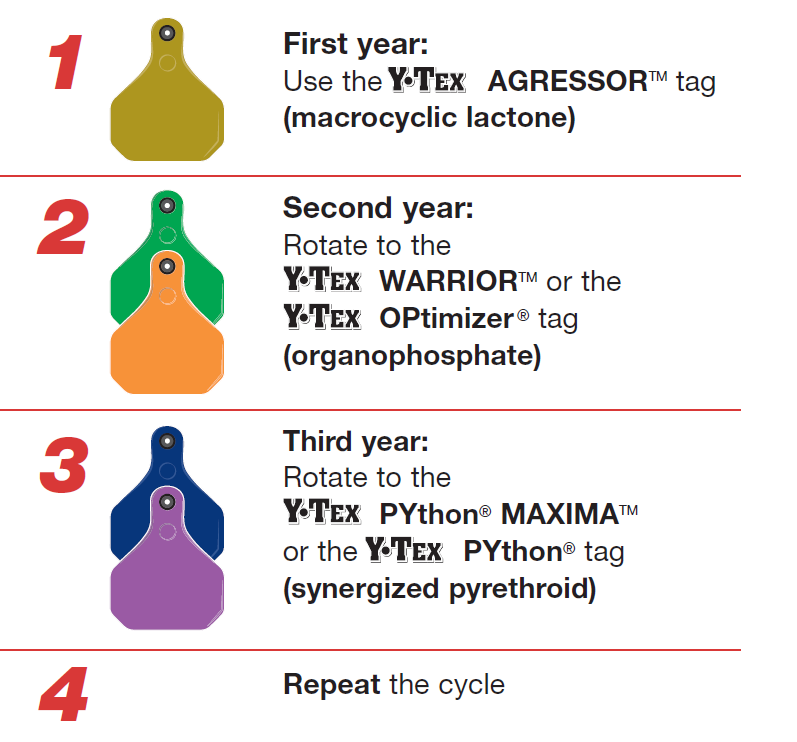Fly Tag Rotation Strategy
Fly tags containing three different insecticides are used in the rotation.
- AGRESSORTM fly tags which contains Macrocyclic lactones.
- OPtimizer® or WARRIORTM fly tags which contain organophosphates
- PYthon® or PYthon® MAXIMATM fly tags which contain synthetic pyrethroids
1st Year - AgressorTM(gold tag)
2nd Year - OPtimizer® (orange tag) or WARRIORTM (green tag)
3rd Year - PYthon® (purple tag) or MAXIMATM (blue tag)
Repeat from beginning
The whole rotation strategy goes for 3 years. At the end of the 3 years you start the rotation again.


-
What is an insecticidal cattle ear tag?
An insecticidal ear tag is a moulded PVC tag that is impregnated with a slow release contact insecticide. It is attached to the ear of the animal in the same way an identification tag is, but always on the back of the ear.
-
How does an insecticidal cattle ear tag work?
Once the fly tag is attached to the animal the insecticide starts to release in small volumes daily over the 3 to 4 month activated period.
The active ingredient in the insecticide is transferred over the animal via its hair follicles with the help of natural grooming and contact habits within the herd. Because only small doses are released daily the chemicals are not absorbed into meat or milk.
-
How quickly do insecticidal cattle ear tags work?
Studies have found that a hair clipping from the hind leg 3 days after the animal was tagged contained a lethal dose of the insecticide.
-
Why is an insecticidal ear tag rotation strategy important?
An insecticidal ear tag rotation strategy is important in helping prevent Buffalo Fly from becoming resistant to a particular chemical group. If a fly population is not exposed to a certain insecticide for two or three years they are less likely to become resistant to it. Therefore it's recommended to alternate insecticidal ear tags with different chemical compounds.